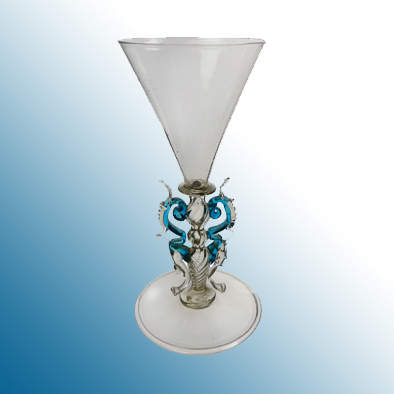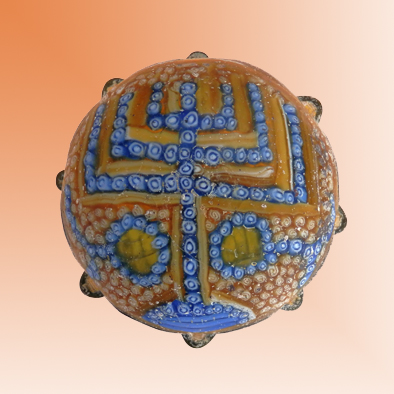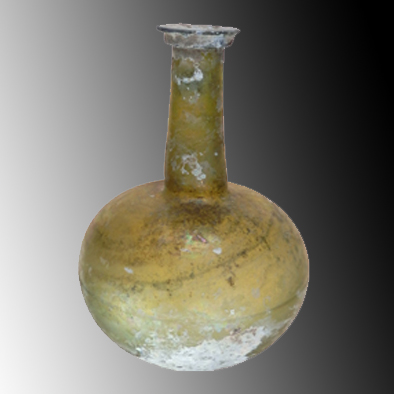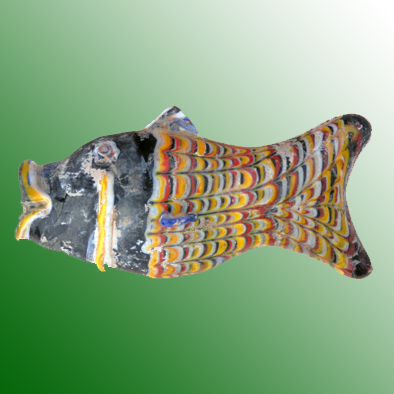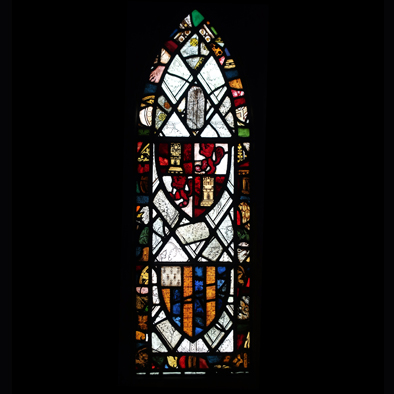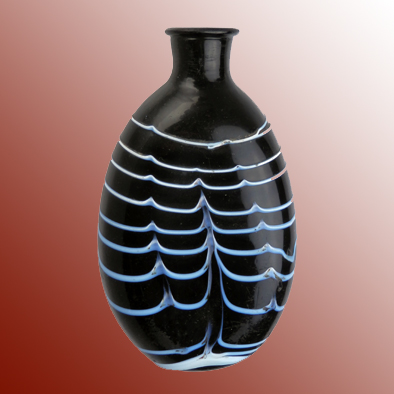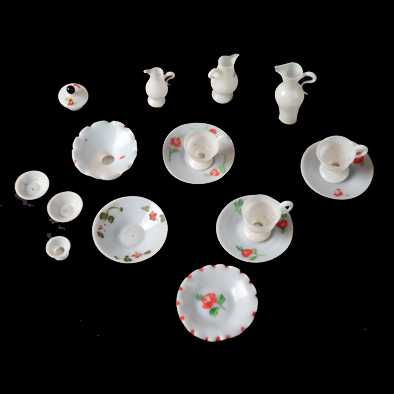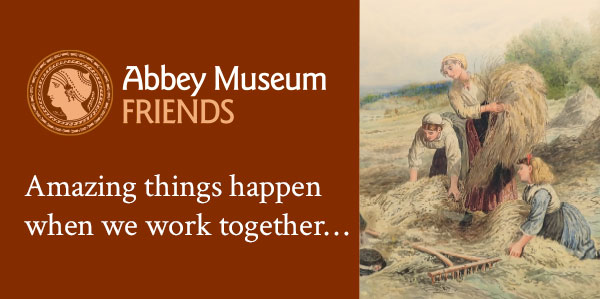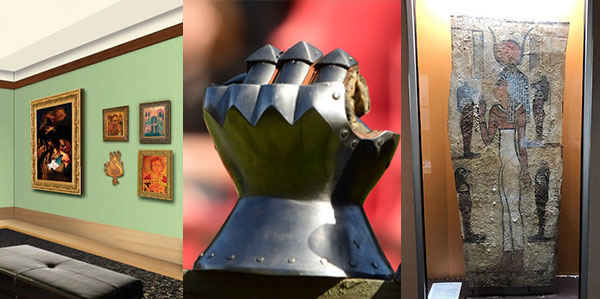Roman glass flask
- W03962
- Abbey Museum Reserve Collection
- Roman province, Eastern Mediterranean (modern day Syria or Turkey)
- 2nd – 3rd century AD
- Bowl D 145 mm H 280 mm
This intact Roman bottle is an example of mould blown glass. The technique used developed quickly after the adoption of free-blowing in many Roman provinces. As the name suggests rather than being blown and shaped simultaneously, the molten glass is lowered into a mould first, then blown. The glass expands filling the space in the mould to create a much more symmetrical vessel in less time than free-blowing. The moulds themselves could be quite basic such as in this example, where only the base of the vessel sat in a spherical mould. The seam where the mould joined together can be seen running around the middle section of the bottle above. Some advanced moulds featured reliefs carved in negative that create an embossed design on the outside of the vessel. These were highly prized luxurious goods. Without the need to shape the vessels freely, coupled with the fact that moulds could be used multiple times, production of glass increased on a massive scale.
This may be one of the reasons why natural coloured glass vessels were popular during this time as opposed to coloured glass which required more time to produce.
Many examples of ancient glass have an iridescent coatingwhich can be mistaken as a feature of the vessel. Devitrification occurs when crystalstructures grow inside or on the surface of an amorphous or crystal-free surface. Coloured glass is more intensely affected by this process as the agents, added to colour the glass, cause it cool slowly giving the crystals more time to grow.
Vessels such as this would have been a common sight in a kitchen, used to store liquids or wine. Serving vessels would usually feature a handle and more elaborate designs and decoration.
One of my personal favourite objects in the Museum’s collection, I was stunned when we received this object in a very generous donation in 2016. The Museum’s collection of Roman glass was already substantial, but the size of this piece alone elevated it to new heights. It is sometimes hard to appreciate quality in mass-produced vessels, we generally don’t expect the same amount of work and effort to put into the objects. However, with ancient glass it is difficult not to be amazed at the strength and longevity of these household items, let alone the beautiful forms and the incredible thinness achieved by the craftsman.
Where is it?
This artefact is one of over 4,000 artefacts held in our reserve collection. By supporting the Museum, you help us preserve these wonderful artefacts for future exhibitions.
Learn about ways to give →









